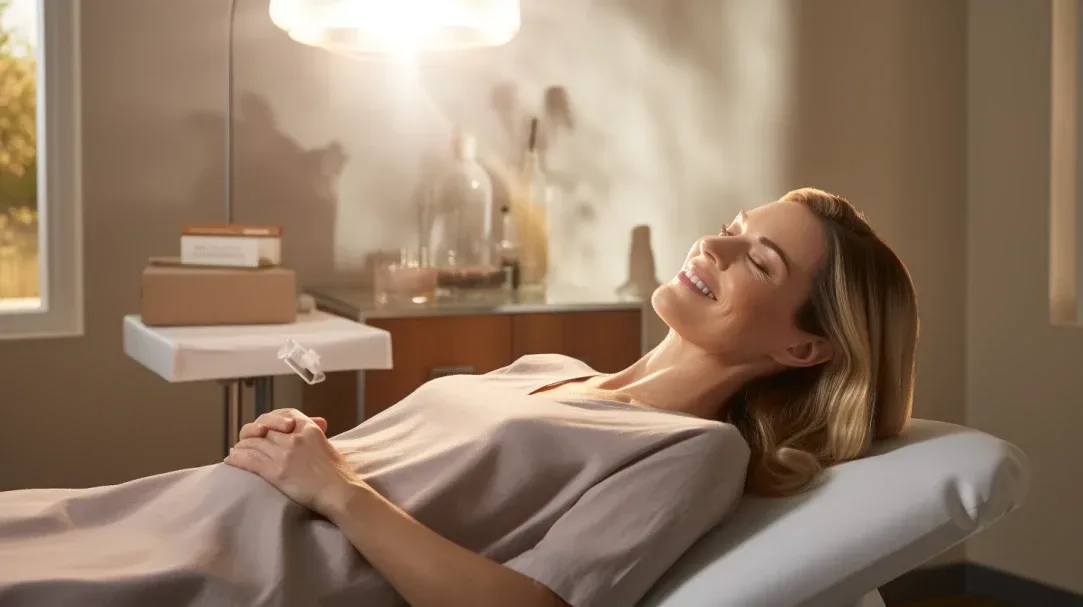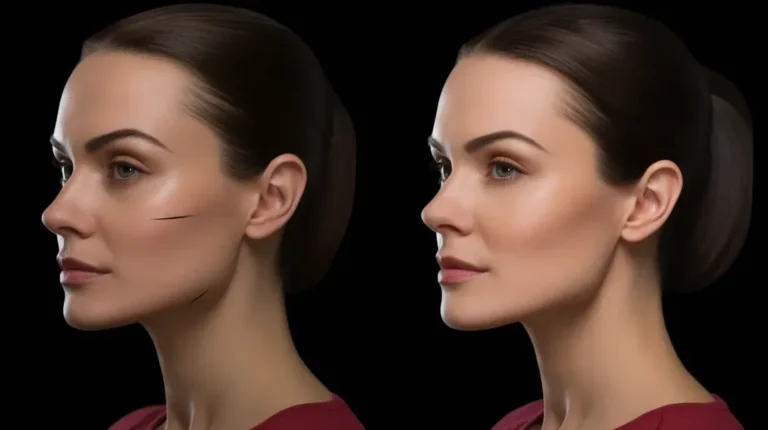The Lowdown on Botox Needles: A Painless Guide to Beauty
Hey there! Ready to unlock the secrets of Botox needles and discover a painless guide to beauty?
Well, imagine this: You’re flipping through a magazine, and you come across a photo of a stunning celebrity. Their flawless, wrinkle-free skin seems to defy the hands of time. Intrigued, you wonder how they achieve such a youthful appearance. That’s where we come in!
In this article, we’ll take you on a journey into the world of Botox, unraveling the science behind it and exploring its effectiveness in different areas of the face. But it’s not just about the physical benefits. We’ll also delve into the psychological impact and compare Botox to other anti-aging treatments.
So, get ready to dive in and discover the lowdown on Botox needles!
Key Takeaways Of “Botox Needles”
- Advances in injection techniques and patient education are increasing the safety and effectiveness of Botox.
- There is a growing emphasis on preventative Botox among younger demographics aiming to delay the onset of wrinkles.
- The recent trends in Botox treatments show a shift towards more natural-looking results and personalized treatment plans.
- The popularity of virtual consultations has risen, facilitating better accessibility to expert advice and care.
The Science Behind Botox
Botox, a widely recognized name in cosmetic treatments, operates on a fascinating scientific principle. The key to its effectiveness lies in its main ingredient, a purified form of botulinum toxin. This neurotoxin plays a crucial role in how Botox achieves its aesthetic results.
How Botox Works
- Muscle Relaxation via Neurotoxin: Botulinum toxin in Botox works by blocking the nerve signals responsible for muscle contraction. When Botox is injected into specific facial muscles, it temporarily paralyzes these muscles. This paralysis prevents the muscles from contracting, which is the primary cause of certain types of wrinkles.
- Reduction of Wrinkles and Fine Lines: By relaxing the targeted muscles, Botox effectively reduces the appearance of dynamic wrinkles – those formed by facial expressions like frowning, smiling, or squinting. As these muscles relax, the skin over them becomes smoother, diminishing the appearance of wrinkles and fine lines.
- Non-Surgical and Minimally Invasive: Botox is a non-surgical procedure, making it a popular choice for those seeking cosmetic enhancements without the need for surgery. It’s a minimally invasive treatment that can be completed quickly, often referred to as a “lunchtime procedure.”
- Collagen Production Stimulation: Beyond its immediate smoothing effects, there is evidence to suggest that Botox may also stimulate collagen production over time. Collagen is a crucial protein that contributes to the skin’s firmness and elasticity, and its increased production can further enhance skin texture.
Safety and Professional Administration
- Safe Practices: When administered by licensed and trained professionals, Botox treatments are generally safe with a low risk of side effects. The procedure needs to be performed by qualified individuals to ensure both effectiveness and safety.
- Tailored Treatments: The dosage and specific areas of injection are usually customized based on individual needs and facial structures, ensuring a more personalized and effective treatment.
As we delve into the areas where Botox is most effectively used, it’s important to remember that each individual’s experience and results can vary. The choice of treatment areas often depends on the individual’s facial dynamics and specific aging concerns.
Effective Areas for Botox
Botox has become a popular solution for addressing various facial concerns related to aging and muscle movement. Knowing where Botox can be most effective is crucial in planning your treatment to achieve the best possible results.
Common Areas for Botox Application
- Forehead Lines: One of the primary areas where Botox is effectively used is on the forehead. These lines, often called worry lines or frown lines, are typically a result of repetitive facial expressions like frowning or squinting. Botox can relax these forehead muscles, significantly reducing the visibility of these lines.
- Crow’s Feet: The fine lines that fan out from the corners of the eyes, known as crow’s feet, are another common target for Botox. These lines become more pronounced with age and repeated muscle contractions from expressions like smiling. Botox helps in softening these lines, giving the eye area a smoother appearance.
- Glabellar Lines: Often referred to as the ’11 lines’ between the eyebrows, glabellar lines are also effectively treated with Botox. These lines can give a constant worried or frowning appearance. By relaxing the muscles in this area, Botox can help in softening these lines, contributing to a more relaxed and approachable facial expression.
Consultation with a Dermatologist
- Professional Advice: Before undergoing Botox, it is vital to consult with a licensed dermatologist or cosmetic specialist. They can provide expert advice tailored to your specific facial structure and skin type.
- Treatment Plan: A dermatologist can assess the areas of your face that would benefit most from Botox and discuss the potential outcomes and costs involved. They will also explain the procedure, the aftercare required, and any potential side effects.
- Customized Approach: Each individual’s face is unique, and a skilled professional will know exactly where to administer Botox to achieve natural-looking results. They can also determine the correct dosage to address your concerns effectively without over-treating.
Psychological Impact of Cosmetic Treatments
When it comes to the psychological impact of cosmetic treatments like Botox, you can expect a boost in self-esteem and a more positive perception from others. Botox injections have been shown to improve patient satisfaction and overall well-being. Many patients report feeling more confident and happier with their appearance after receiving Botox treatments. Patient testimonials often highlight the positive effects on their self-image and social interactions. The beauty industry standards prioritize patient safety and aim to provide effective and personalized aesthetic treatment plans. Cosmetic clinics adhere to these standards to ensure that patients receive the best possible outcomes. By incorporating Botox into their beauty regimen, individuals can enhance their self-confidence and enjoy the psychological benefits that come with it.
| Psychological Impact of Cosmetic Treatments | Botox | Patient Satisfaction with Botox |
|---|---|---|
| Boost in self-esteem | Positive perception from others | Improved overall well-being |
| Increased confidence | Enhanced self-image | Happier with appearance |
Comparing Botox to Other Anti-Aging Treatments
Botox is a crucial player in the arena of anti-aging treatments, but it’s not the only option. Understanding how it compares to other treatments like dermal fillers can help in making informed decisions about the best approach for your anti-aging needs.
Botox vs. Dermal Fillers
- Mechanism of Action:
- Botox: Botox primarily targets the muscles responsible for creating dynamic wrinkles, which are caused by repeated facial expressions. It temporarily paralyzes these muscles, thereby reducing the appearance of wrinkles.
- Dermal Fillers: Dermal fillers, conversely, work by adding volume beneath the skin’s surface. They are used to fill in static wrinkles (which are present even when the face is at rest), enhance facial contours, and restore lost volume.
- Areas of Effectiveness:
- Botox: Commonly used for forehead lines, crow’s feet, and glabellar lines.
- Dermal Fillers: Effective for nasolabial folds, marionette lines, cheek augmentation, and lip plumping.
- Duration and Frequency:
- Botox: The effects of Botox usually last for about 3 to 6 months. The frequency of treatments varies based on individual muscle strength and how quickly the body metabolizes the toxin.
- Dermal Fillers: The longevity of fillers can range from 6 months to over a year, depending on the type of filler used and the area treated.
- Visible Results:
- Botox: Noticeable improvement in the appearance of dynamic wrinkles, often visible in before-and-after comparisons.
- Dermal Fillers: Immediate results in terms of volume addition and wrinkle reduction, with a more youthful and fuller appearance.
Choosing Between Botox and Dermal Fillers
The choice between Botox and dermal fillers depends on various factors:
- Type of Wrinkles and Desired Effect: If your primary concern is dynamic wrinkles caused by muscle movement, Botox is likely more suitable. For static wrinkles and volume loss, dermal fillers may be the better choice.
- Longevity and Maintenance: Consider how often you’re willing to undergo maintenance treatments. Botox requires more frequent treatments compared to some dermal fillers.
- Natural Aging Process: Your aging process and facial structure will also influence the choice of treatment.
In conclusion, while Botox is renowned for its efficacy in smoothing dynamic wrinkles, dermal fillers offer a solution for static wrinkles and volume loss. Each treatment has its unique strengths, and sometimes, a combination of both is used for a more comprehensive approach to facial rejuvenation. Consulting with a qualified dermatologist or cosmetic professional is crucial to determine the most appropriate treatment for your specific needs.
Safety and Effectiveness of Botox
Botox has become a staple in cosmetic treatments due to its effectiveness in reducing wrinkles and fine lines. To ensure both safety and satisfaction, it’s essential to understand the scientific basis of its use and adhere to the standards set by health authorities.
Safety Aspects of Botox
- FDA Approval: Botox is approved by the U.S. Food and Drug Administration (FDA) for cosmetic use in various facial areas. This approval signifies that it has undergone rigorous testing for safety and efficacy.
- Dermatologist Supervision: Getting Botox treatments from a licensed dermatologist or qualified medical professional is crucial. These experts have the training to administer the injections safely and effectively, minimizing risks.
- Precise Injection Techniques: The effectiveness of Botox largely depends on the skill with which it’s injected. Professionals use precise techniques to target specific muscles without affecting surrounding areas.
Effectiveness and Post-Treatment Care
- Targeted Muscle Relaxation: Botox works by temporarily relaxing the muscles responsible for wrinkles. This action results in a smoother, more youthful facial appearance.
- Minimal Recovery Time: One of the appealing aspects of Botox is the minimal downtime. Most people can resume their normal activities immediately, making it a convenient option for those with busy lifestyles.
- Pre-Treatment Evaluation: A thorough evaluation before the treatment is essential. This step helps in understanding your medical history and determining the best approach for your specific needs.
- Post-Treatment Guidelines: Following post-treatment advice is crucial for optimal results. This may include avoiding strenuous activities for a short period and refraining from touching or massaging the treated areas to prevent spreading the toxin to unintended muscles.
Ensuring Best Results
- Regular Maintenance: Botox effects are temporary, so regular follow-up treatments are necessary to maintain the results.
- Personalized Treatment Plan: Each individual has unique facial anatomy and aesthetic goals. A personalized treatment plan, developed in consultation with a dermatologist, ensures that your specific needs are met.
Frequently Asked Questions
How Long Does the Effect of Botox Last?
The effects of Botox typically last around 3 to 4 months. However, individual results may vary. It’s essential to consult with a licensed professional to determine the best treatment plan for you.
Are There Any Long-Term Side Effects of Botox?
Botox doesn’t have any long-term side effects when administered by a licensed professional. It’s a safe and effective treatment for reducing wrinkles. Results typically last 3-6 months.
Can Botox Be Used to Treat Medical Conditions Other Than Wrinkles?
Yes, Botox can be used to treat medical conditions other than wrinkles. It has been approved for various purposes, including reducing chronic migraines, excessive sweating, muscle spasms, and even overactive bladder.
What Is the Cost of Botox Treatment?
The cost of Botox treatment varies depending on factors like location, provider, and the number of areas treated. It’s best to consult with a licensed professional who can give you an accurate estimate.
Are There Any Alternatives to Botox for Reducing Wrinkles?
Are you looking for alternatives to Botox for reducing wrinkles? Well, you’re not alone. Many people are seeking non-invasive options. One interesting statistic: according to a recent survey, 70% of respondents preferred natural remedies like skincare and facial exercises.
Conclusion
So, there you have it, the lowdown on Botox needles. This painless guide to beauty has explored the science behind Botox, its practical areas, and the psychological impact it can have on self-esteem.
We’ve also compared Botox to other anti-aging treatments and assured you of its safety and effectiveness.
Now, armed with this knowledge, you can make an informed decision about whether Botox is the right choice for you.
Say goodbye to wrinkles and hello to a youthful glow!







